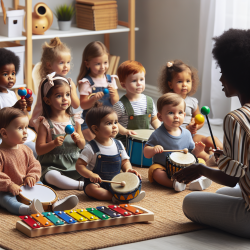Music and language, two quintessential aspects of human culture and development, have long fascinated researchers for their complexity and universality. A groundbreaking study by Sandra Trehub, BaI'ham Morrongiello, and Dennis P. Phillips, titled "Peer Commentary on 'Infants Perception of Musical Sequences: Implications for Language Acquisition'", provides profound insights into the interconnectedness of musical and linguistic processing in early infancy. This research not only broadens our understanding of infant perceptual abilities but also offers practical pathways for practitioners aiming to support language acquisition and cognitive development in children.
The study explores the intriguing notion that infants' perception of musical sequences might play a critical role in their subsequent language development. It raises fundamental questions about the relationship between musical and linguistic processes, the impact of auditory experience on developmental milestones, and the potential for shared underlying mechanisms in music and language perception.
Key Insights from the Study:
- Interrelation of Musical and Linguistic Processes: The research suggests that attention to suprasegmental aspects of speech (such as intonation and rhythm) does not necessarily detract from segmental processing (such as phonemes). This challenges the traditional view that infants might be limited in their ability to process both types of information simultaneously.
- Early Discrimination of Melodic Contours: Infants as young as 7 months can differentiate between lawful and unlawful melodies, indicating a sophisticated level of auditory processing that precedes the fine-tuning of their ear to their native language.
- Shared Underlying Processes: The commentary raises the question of whether musical and linguistic processing in infants reflects separate but similarly organized systems or if they are manifestations of the same underlying processes. While the left hemisphere predominantly processes speech and the right hemisphere processes music in adults, this distinction may not be as clear-cut in infants.
Implications for Practitioners:
Understanding the interplay between music and language in early development has significant implications for speech therapists, educators, and parents. Here are several ways practitioners can leverage these insights:
- Integrating Musical Activities: Given the potential for shared processing mechanisms, incorporating musical activities that emphasize rhythm and melody could support language development. Singing, rhythm games, and exposure to a variety of musical genres could enrich the auditory environment of infants, potentially facilitating their linguistic development.
- Focus on Suprasegmental Features: Practitioners can design interventions that highlight the suprasegmental features of speech, such as intonation patterns and rhythm, which are akin to musical elements. This could help infants develop a more holistic understanding of language and improve their ability to discriminate between different linguistic sounds.
- Early Intervention and Exposure: The study underscores the importance of early auditory experience in shaping infants' perceptual abilities. Practitioners should encourage parents to expose their children to a rich linguistic and musical environment from a very young age, to harness the natural predisposition for auditory learning.
- Research-Informed Practice: Finally, this study highlights the need for ongoing research and its application in practice. Practitioners should stay informed about the latest developments in the field of language acquisition and auditory processing, to refine their approaches and interventions.
The intersection of music and language in early infancy offers a fascinating window into the cognitive processes underlying human development. By drawing on the insights provided by Trehub and colleagues, practitioners can enhance their strategies for supporting language acquisition in children, ultimately contributing to their cognitive and communicative competencies.
For those interested in delving deeper into this subject, I highly recommend reading the original research paper. To read the original research paper, please follow this link: Peer Commentary on "Infants Perception of Musical Sequences: Implications for Language Acquisition".










